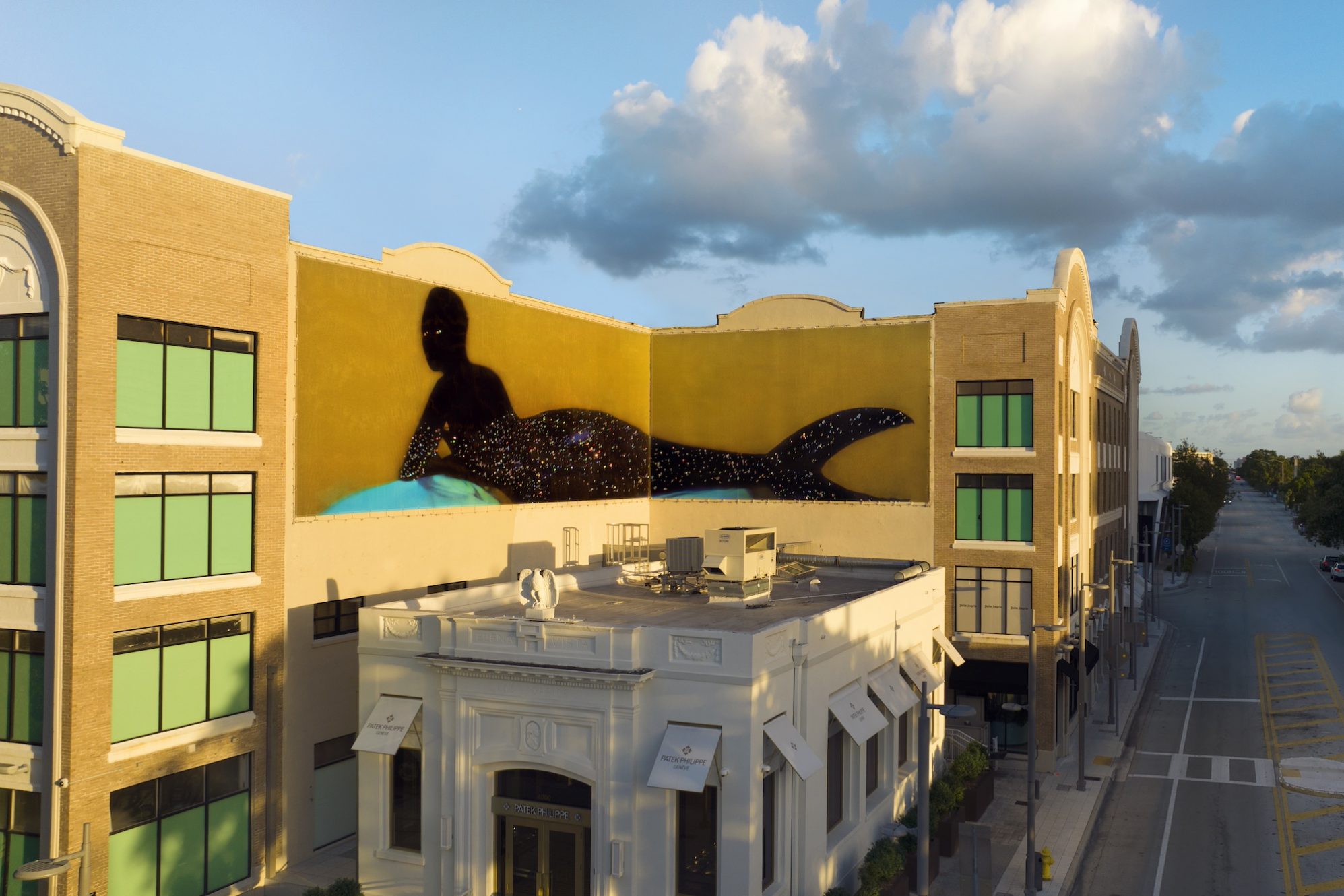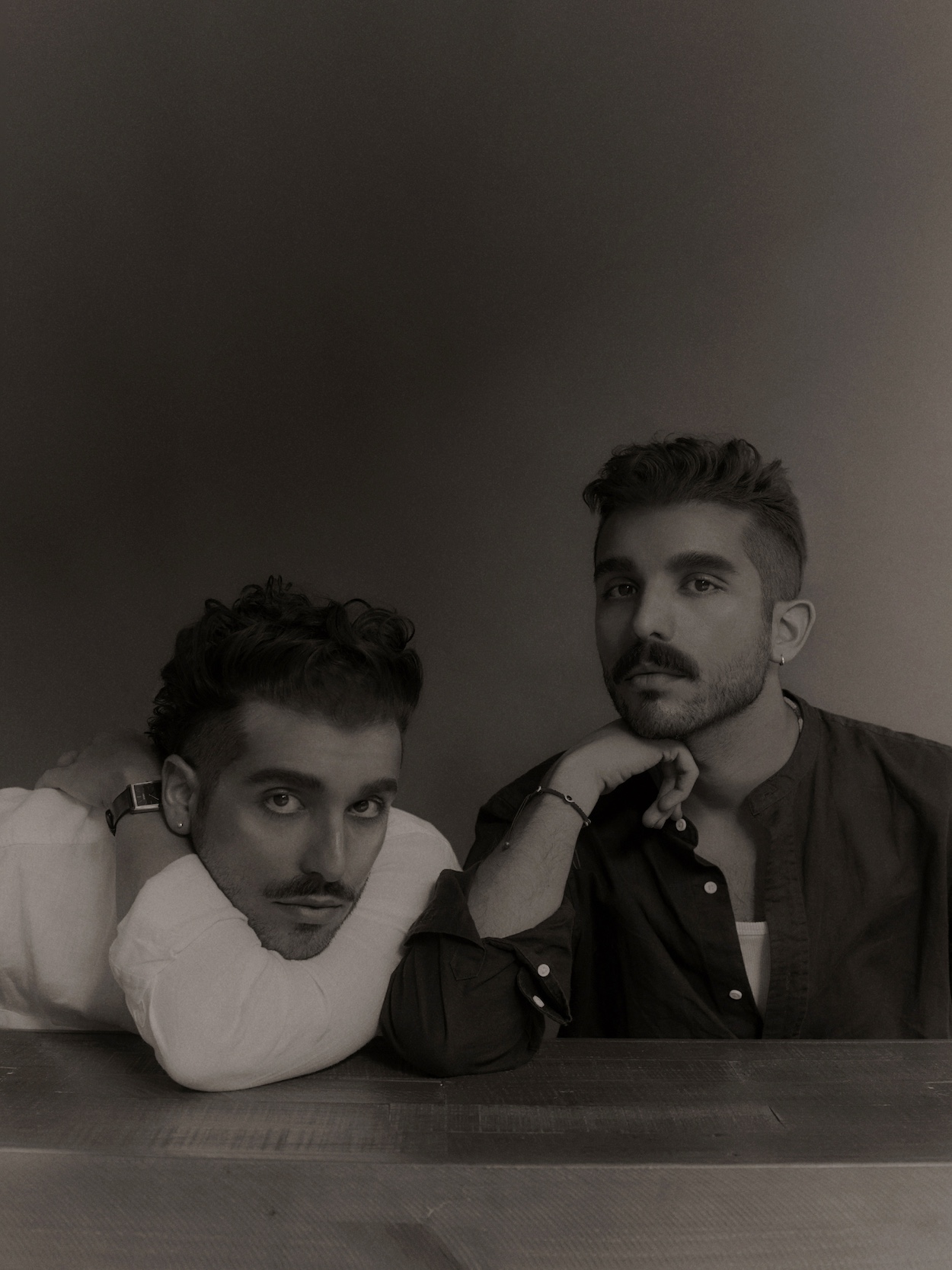Here, we ask an artist to frame the essential details behind one of their latest works.
Bio: Elliot and Erick Jiménez, 34, New York and Miami (@elliotanderick)
Title of work: Reclining Mermaid (2023).
Where to see it: On the historic Moore Building (190 NE 40th St) in the Miami Design District.
Three words to describe it: Migration, duality, and transculturation.
What was on your mind at the time: We were thinking of migration. As Miami celebrates its 125th anniversary, we were reflecting on the many communities that have helped build the city’s unique fabric, particularly those from the Caribbean. Being raised in Miami, a place with the country’s largest community of Cubans, we wanted to create a figure representative of this. Water being a symbol of migration, we felt Reclining Mermaid was the perfect interpretation. Portraying the deity Yemaya, Goddess of the seas, many Cuban immigrants who migrate through the ocean pray to her for safe passage.
An interesting feature that’s not immediately noticeable: At first glance, most people think the piece is a painting, but it’s actually a photograph we took––which happens often with our work. There are thousands of crystal-like effervescent sequins manually added over the print of the mermaid costume and are not immediately noticeable from a distance. Upon closer inspection, when the wind moves the sequins and the sun reflects them, you can see how they glisten against the sunlight, imitating the ocean’s reflection on the mermaid’s dress.
How it reflects your practice as a whole: Like most of our work, this piece draws from art history, particularly the popular motif of the Reclining Venus within the Western context. We recontextualize this symbol to shift cultural perspectives. This work represents the transculturation within Cuba, a term integral to our practice and coined by Cuban anthropologist Fernando Ortiz. The blending of theological influences from the enslaved Yoruba people of West Africa with the Catholic tenets from the Spaniards who colonized the island bore a unique Cuban religion known as Lucumí.
In our work, we utilize these deities we were raised with as protagonists to express duality, migration, and transculturation. The deity depicted in this piece, Yemaya, represents the Yoruba Goddess of the seas, a mermaid syncretized with Cuba’s Black Madonna, The Virgin of Regla. Often interchangeable by name but representative of one entity within two cultures, this piece echoes that sentiment: the historical European representations of what a Reclining Venus should look like in the context of a deity within Cuban culture. Reclining Mermaid is a reflection of us and our work, the dichotomy within our heritage, our biracial upbringing connected to these histories, and our duality as identical twins.
One song that captures its essence: “Mary Shelley” by Amelia Warner.

